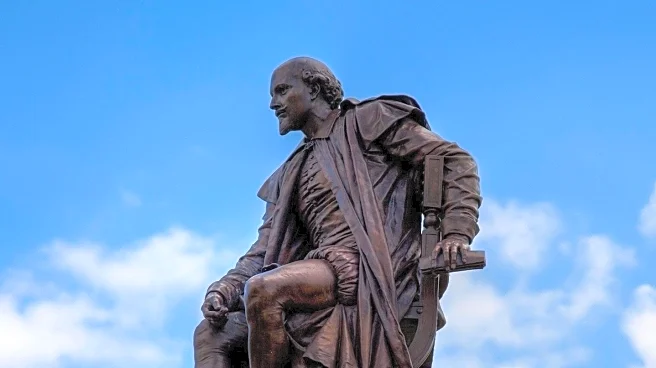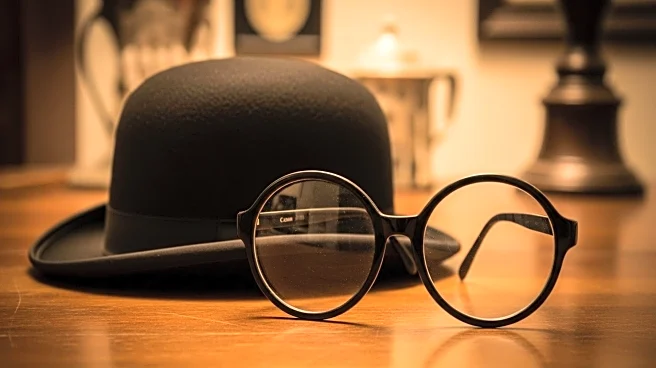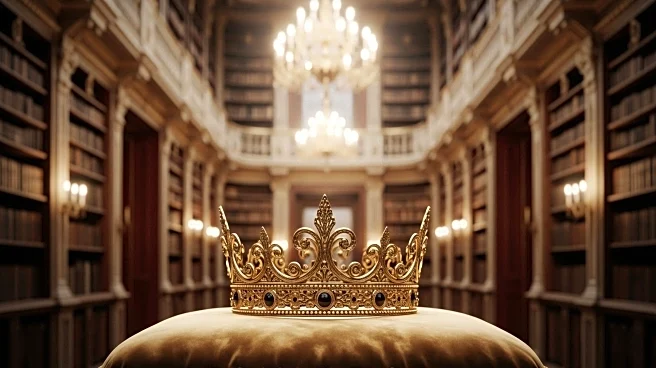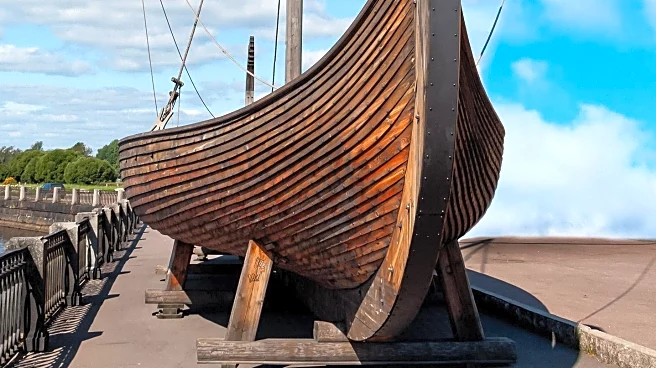What is the story about?
What's Happening?
Dorset Council has granted permission for the replacement of a sceptre that went missing from a statue of King George III in Weymouth over 50 years ago. The statue, which was erected in 1809 to commemorate the monarch's Golden Jubilee, originally featured King George III in Garter robes holding a sceptre. The sceptre disappeared in the 1970s, and its absence has left the statue incomplete. The council has approved the creation of a 5-foot-long gilded hardwood replica to restore the statue's original appearance. The decision aims to enhance the statue's aesthetic and historical value, as the sceptre was last seen in a photograph from 1964. The council suspects trophy hunters may have been responsible for the disappearance, as similar incidents have occurred with other parts of the statue.
Why It's Important?
The restoration of the sceptre on the King George III statue is significant for preserving historical monuments and cultural heritage. Statues like this one serve as important reminders of historical events and figures, contributing to the cultural identity and tourism appeal of regions like Weymouth. By restoring the statue to its original form, Dorset Council is not only enhancing the visual appeal of the area but also reinforcing the importance of maintaining historical artifacts. This move could potentially increase local tourism, as visitors are often drawn to sites with rich historical backgrounds. Additionally, the decision reflects broader efforts to protect and restore cultural heritage sites, which are vital for educational purposes and community pride.
What's Next?
Following the approval, the next steps involve the crafting and installation of the replica sceptre. Dorset Council will oversee the process to ensure the replica matches the original design as closely as possible. The restoration project may prompt further discussions on the preservation of other historical monuments in the area, potentially leading to more initiatives aimed at safeguarding cultural heritage. Local stakeholders, including historians and community members, may engage in dialogues about the importance of such restorations and explore additional opportunities to enhance the region's historical sites.
Beyond the Headlines
The replacement of the sceptre highlights the challenges faced in preserving historical monuments, particularly those exposed to vandalism or theft. It raises questions about the security measures needed to protect such artifacts and the role of local authorities in maintaining cultural heritage. The incident also underscores the importance of community involvement in heritage conservation, as public interest and support can drive efforts to restore and protect historical sites.
AI Generated Content
Do you find this article useful?














